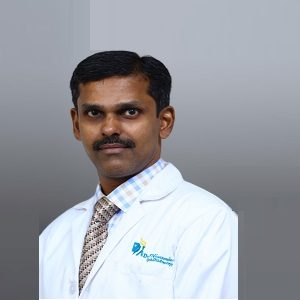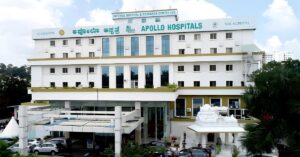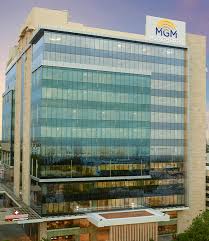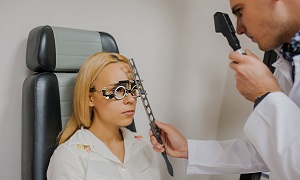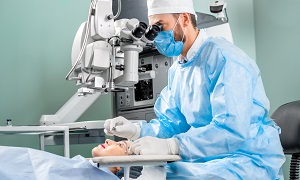Best Doctors in India for Cataracts treatment
- Opthalmologist, Chennai, India
- Over 26 years’ experience
- Apollo Hospitals Greams Road, Apollo Spectra Hospital Chennai-Alwarpet
Profile Highlights:
- Dr. Pratik Ranjan Sen is a specialist in Ophthalmology and serves as an Ophthalmologist – Consultant at Apollo Hospitals, Chennai.
- He has performed over 8000 Retinal detachment and other Vitreo retinal disorder surgeries.
- Dr. Pratik Ranjan Sen considers his profession a mission and is dedicated to his work. Due to this, he has gained enough trust and recommendations from his patients.
- Ophthalmologist, Chennai, India
- Over 21 years’ experience
- Apollo Hospitals Greams Road
Profile Highlights:
- Dr. Viswanathan P is one of the best eye surgeons in India having an overall experience of 21 years.
- He is a qualified doctor from the Tamil Nadu University of India and possesses a degree in MBBS and MS.
- One can visit him for routine eye check-ups or retina examinations and services like eye surgery, retina surgery, cataract surgery, etc.
- Ophthalmologist, Gurugram, India
- Over 13 years’ experience
- Medanta-The Medicity, Gurgaon
Profile Highlights:
- Dr. Svati Bansal is an esteemed consultant and practitioner of ophthalmology in Gurugram.
- Her specialty lies in orbit and oculoplasty, ocular oncology, ocular trauma, and neuro-ophthalmology.
- She has fellowships in neuro-ophthalmology and ocular motility, oculoplasty, and facial aesthetics, and ocular oculoplastic and ocular oncology.
- Top Ophthalmologist | Fortis Hospital, Mulund, Mumbai
- 10+ Years Experience
- Fortis Hospital Mulund Mumbai
Profile Highlights:
- Dr. Amit Jain is an experienced Ophthalmologist based in Mumbai, who specializes in treating patients with eye issues, particularly those related to Vitreo-Retina, Uvea, and ROP.
- He is an expert in employing the most recent techniques in eye surgery to address conditions like diabetes that damage the eyes and correct issues with the back of the eye.
- With more than 10 years of expertise, Dr. Amit Jain has made a name for himself as a leading expert in the field of eye care.
- He completed his medical training in Ophthalmology at the Dr. Rajendra Prasad Centre for Ophthalmic Sciences at AIIMS in New Delhi, a renowned institute for eye treatment. Later, he went on to pursue long term clinical fellowship in Vitreoretina at Sanskara Netralaya in Kolkata and Chennai.
- He started his professional career at Shri Ganapati Netralaya in Jalna, Maharashtra as an Associate Consultant in the department of Vitreoretina and Uvea services. And now, he serves as a Consultant in the Department of Ophthalmology at Fortis Hospital, Mulund.
- Apart from being a medical practitioner, Dr. Jain also enjoys imparting information and knowledge among young minds. He mentors aspiring medical professionals who wish to focus on eye care.
- Several of his works on the topic of eyes have been published in prestigious medical publications. Additionally, he often speaks at medical conferences where eye specialists from throughout the nation get together to exchange knowledge.
Best Hospitals in India for Cataracts treatment
Hospital Highlights:
- Apollo Hospitals is a private healthcare group in India, with its headquarters based in Chennai. Established in 1983 by Dr. Prathap C. Reddy, the group offers a wide range of medical treatments and services across various specialties.
- It is renowned for emphasizing innovation and utilizing cutting-edge medical technologies into patient treatment.
- Known as India’s first corporate hospital, Apollo Hospitals is often credited for pioneering the private healthcare revolution in the country.
- With clinics and hospitals located all throughout India, Apollo Hospitals is a nationwide healthcare organization. Its presence can also be found in foreign countries.
- Preventive health examinations, medical and surgical treatment, and diagnostic centres are just a few of the services that the Apollo group provides.
- The group has several centres of expertise, including Cardiac Sciences, Neurosciences, Orthopedics, Emergency Care, Cancer Care, and Organ Transplantation.
- City: Chennai, India
Hospital Highlights:
- RIMC is a multi-specialty hospital in a sprawling area of 36 acres located in Chromepet, Chennai, Tamil Nadu, India.
- The facility has 450 beds including 130 critical care beds, 9 operating rooms, modern reference laboratories and radiology services, and is conveniently located near road, rail and air transportation.
- RIMC is led and managed by world-renowned physicians committed to healthcare.
- RIMC offers the broadest range of clinical care, education, and research. The hospital offers state-of-the-art technology and modern treatment facilities designed to provide health care at an affordable cost.
- Rela Institute is driven by patient needs, comfort and confidence.
- City: New Delhi, India
Hospital Highlights:
- Fortis Hospital in Shalimar Bagh is a multi-super specialty hospital that strives to provide world-class patient care by leaving no stone unturned.
- Fortis, Shalimar Bagh, with 262 beds and a 7.34-acre footprint, provides the best level of medical care through its team of doctors, nurses, technicians, and management professionals.
- City: Bengaluru, India
Hospital Highlights:
- Established in 2007, the Apollo Hospitals Bangalore is a 300-bed multispecialty hospital situated in Bannerghatta Road, Bangalore.
- Equipped with the state-of-the-art technology, it is a leading hospital dedicated to providing healthcare needs to patients with compassion and expertise.
- It is the first hospital to have completed the highest number of Robot Assisted Heart Surgeries in India.
- Over the years, it has successfully conducted some of the rarest medical procedures such as spinal angiolipoma excision, autologous chondrocyte implantations, and tibial tuberosity shift with MPSL reconstruction.
- The Apollo Hospitals Bangalore has the reputation of performing the greatest series of airway stents in the country.
- Additionally, the hospital is known for providing comprehensive treatment in specialties such as gastroenterology, urology, gynecology, oncology, colorectal surgery, etc.
- The “The Minimal Access Surgery Centre” (MASC), one of Apollo Hospitals, Bangalore’s premier Centres of Excellence, is devoted to the use of minimally invasive surgical procedures.
- In 2013, THE WEEK-A C Nielsen, Best Hospital Survey ranked Apollo Hospitals Bangalore as the 2nd best multi-speciality hospital in Bangalore.
- City: Mumbai, India
Hospital Highlights:
- Gleneagles Global Hospital The 450-bed facility comprises of 17-stories, housing state-of-the-art infrastructure, and advanced medical care facilities.
- The hospital offers end-to-end clinical, surgical, and diagnostic services. It is equipped with a team of eminent medical professionals aided by qualified nurses and medical staff
- The Hospital offers advanced Endoscopic procedures, Hepatobiliary and Liver Surgeries, Surgical and Medical Gastroenterology, Bariatric Surgery, and Robotic surgery.
- The hospital is a center of excellence for Orthopedics, Joint Replacement, Knee Replacement, and Hip Replacement surgery.
- City: Hyderabad, India
Hospital Highlights:
- CARE Hospitals were established in the year 2000, by CARE Group.
- The multispecialty hospital has 435 beds, including 120 critical care beds, with an annual inflow of 180000 outpatients and 16,000 in-patients.
- The hospital provides specialty medical services in Cardiology, Cardiothoracic Surgery, Pediatric Cardiology, Pediatric Cardiothoracic Surgery, Neurology, Neurosurgery, Nephrology, and Urology.
- The hospital has the first dual source, 128 slice CT scanner (for high precision cardiac imaging) – the first of its kind in south India.
- The hospital offers a wide range of accommodation facilities for the convenience of its varied patient base, ranging from general wards to super deluxe rooms.
- City: Mumbai, India
Hospital Highlights:
- Fortis Hospital in Mulund is a 315-bed multi-speciality tertiary care hospital with five JCI accreditations that offers a wide variety of diagnostic and treatment services. The Fortis Hospital in Mulund delivers patient-centred treatment with cutting-edge technology, highly skilled and experienced surgeons, and paramedical staff.
- This institution houses Maharashtra’s largest multi-organ transplant centre. It is also the first heart transplant centre in western India to conduct 100 or more consecutive heart transplants in under four years. It is the only hospital in the city to have multi-organ transplants and has handled the youngest patient for angioplasty. Fortis Hospital Mulund now boasts the first advanced surgical robot in central Mumbai.
- Cardiology and heart surgery, urology, nephrology, neurosciences, orthopaedics, digestive care, emergency and critical care, and maternity care are among the services provided by the hospital.
- City: New Delhi, India
Hospital Highlights:
- Manipal Hospitals, Dwarka, is a super-specialty hospital in Dwarka, New Delhi, which is a part of Manipal Hospitals Group.
- The hospital aims to provide the best treatment on par with international standards at a fraction of the cost.
- Equipped with 380 beds, the hospital is also one of the new age hospitals which are equipped fully with state-of-the-art infrastructure, cutting-edge technology as well as the latest and advanced clinical practices. The hospital also has 13 modular Operation theatres with 118 beds which are solely meant for critical care.
- The hospital comprises internationally acclaimed doctors and highly professional and experienced hospital and medical staff who are able to provide preventive, therapeutic, and diagnostic services all under one roof.
- City: Chennai, India
Hospital Highlights:
- Located in Chennai, India, MGM Healthcare is a top multispecialty hospital that provides all medical services under one roof.
- Since its founding in 2019, MGM Healthcare has quickly become a leading national referral centre, creating several innovative flagship initiatives.
- MGM Healthcare combines next-generation medical and digital technologies to provide better patient results.
- With 12 centres of excellence, more than 400 inpatient beds, 100 intensive care unit beds, and 24/7 emergency care, MGM Healthcare leaves no chance in redefining the patient experience in Chennai.
- MGM Healthcare boasts 250+ expert doctors across 30+ departments, including Cardiology, Pulmonology, Neurology, Obstetrics & Gynaecology, and more.
- They house 12 specialized Centres of Excellence, including Neurosciences, Orthopaedics, and Multi-Organ Transplantation.
- Their team of doctors, nurses, and paramedics works together to give every patient individualized treatment.
Hospital Highlights:
- Lilavati Hospital & Research Centre is India’s premier multi-speciality tertiary care hospital and has been recognised as a global medical excellence centre.
- Lilavati Hospital & Research Centre has built an unrivalled level of trust with its patients over the years, thanks to a solid foundation that comprises cutting-edge facilities, the best medical competence, research, education, and charity endeavours.
- The hospital is quite proud of the fact that it now serves patients from all kinds of backgrounds, not just from the United States but from all around the world.
- The hospital has a total of 323 beds, one of the largest Intensive Care Units (ICUs), 12 Operation Theatres with modern amenities, over 300 consultants, and almost 1,800 personnel.
Cataracts
When a clouding is formed over the clear lens of the eyes, it is called a Cataract. People suffering from this ailment feel like seeing through a frosty or fogged-up window when they see through their cloudy lenses. It causes difficulty in several day-to-day activities, such as reading, driving or even seeing somebody’s face clearly.
Although most cataracts develop slowly, your eyesight doesn’t get disturbed early on. However, over time, it eventually starts interfering with your vision. Sometimes cataracts also make the colors appear less vibrant and yellowed, similar to a sepia-toned photo. Though it is known as the most common cause of vision loss worldwide, it is treatable.
Initially, stronger lighting and eyeglass can help people who are suffering from cataracts. However, if it continues to interfere with daily activities, cataract surgery might be the best option. Cataract surgery is generally safe as well as effective.
Cataracts usually result when people get older, and usually after the age of forty. This happens as the proteins that make up the lens start to clump together, causing the clouding.
Symptoms of Cataracts
The signs and symptoms of cataracts can include:
- Clouded, dim or blurred vision
- Difficulty in vision, especially at night
- Light sensitivity
- Visual halos around bright lights
- Double vision
- Requiring brighter light for reading or any such activity.
An outside viewer will see that the pupil of the cataract patient will appear light gray rather than black when it reaches an advanced stage.
Common types of Cataracts
There are different types of Cataracts:
- Nuclear cataracts- A nuclear cataract forms in the center of the lens of the eyes, and usually causes nearsightedness or even an improvement in one’s reading vision, temporarily. However, over time, it gradually worsens and affects the vision, turning it densely yellow, and further clouding it.
- Cortical Cataracts- A cortical cataract is a type of cataract that affects the edges of the lens. It begins as a whitish, wedge-shaped opacities or streaks on the lens cortex’s outer edge. When it slowly progresses, the streaks extend to the center which causes interference with the light that passes through the center of the lens.
- Posterior subcapsular cataracts- This kind of cataract develops along the back of the lens, and unfortunately, compared to the others, it develops much more quickly. It can interfere with your reading vision, reduce your vision in bright light, and also cause halos around lights at night.
- Congenital cataracts- Some people have cataracts since birth, or develop them in early childhood. This kind of cataracts can be genetic, or even associated with an intrauterine infection or trauma.
Causes of Cataracts
Most Cataracts develop due to aging, or when an injury changes the tissue that makes up the eye lens. Sometimes inherited genetic disorders that cause health problems can also increase one’s risk of cataracts. Medical conditions such as diabetes, or past eye surgery can also sometimes contribute to cataracts. Using steroid medications for a long time can also cause it to develop.
How Cataracts form:
The lens, where the cataracts form, is positioned behind the iris, the colored part of the eye. The lens focuses the light which is passed into your eye, producing a clear and sharp image on the retina. However, when you age, the flexibility of your lenses decreases, and they also cause the lens to break down and clump together, which causes clouding in small areas within the lens.
As the cataract continues to develop, the clouding becomes denser and involves a bigger part of the lens during this period of time. The cataract scatters as well as blocks the light when it tries to pass through the lens, and due to this, the sharply defined image is unable to reach the retina. This causes the vision to become blurry.
Risk Factors of Cataracts
The risk factors of Cataracts are:
- Excessive UV radiation
- Smoking
- High blood pressure
- Obesity
- Excessive Alcohol Intake
- Eye Injury
- Previous Eye Surgery
- Eye Inflammation
- Family History of Cataracts.
Preventing Cataracts
There is nothing that can guarantee to stop cataracts from developing, as they simply appear as we age. However, there are still some preventive measures that we can take to limit the risk factors.
- Wearing sunglasses during the daytime can help ones’ eyes from being exposed to the sun’s UV radiation.
- Quitting smoking can also help in the prevention of cataracts.
- Eating a healthy diet is also very important, and maintaining an exercise regiment, even if it is just light physical activity such as walking.
- Managing and reducing the effects of coexisting conditions such as diabetes or hypertension can help as well.
- One can consider getting eye exams done frequently in order to ensure that if cataracts are developing, they are diagnosed quite early.
- If you have other health problems, such as diabetes, which can increase the risk of cataracts, it is important that you follow your treatment plan properly.
Diagnosis of Cataracts
When you want to determine whether you are having cataracts, your doctor will need to review your medical history and look for symptoms. An eye examination will also need to be performed. Your doctor may perform several tests, which can include the following:
Visual Acuity Test
Visual acuity test uses eye charts in order to measure how well you are able to read a series of letters. One eye is tested one at a time, while the other remains covered. With the help of the chart, the eye doctor is able to determine if you have 20/20 vision, or if the eye is showing signs of impairment.
Slit-lamp examination
Retinal exam
Surgery for Cataracts
Surgery is the only effective treatment for cataracts when the prescription glasses can no longer give you the clear vision that you want.
First, you need to consult with your eye doctor, whether surgery is right for you. Eye doctors usually suggest surgery only when one’s quality of life is affected and you are unable to perform your day-to-day activities.
However, the decision remains up to you once the doctor has made the decision. Most people don’t rush to remove their cataracts as, despite the difficulties, it doesn’t really harm their eyes. However, it is important to note that for people with diabetes, cataracts can worsen quite fast.
The surgery is done on an outpatient basis, which means that you are able to go home right after the surgery. The surgery involves the surgeon removing your natural lens and replacing it with an artificial one. It has a high success rate, and 96 percent of people claim that they see better afterwards.
If you delay the procedure, it won’t affect much how well your vision recovers if you later make the decision to go through cataract surgery. Take time to consider the benefits as well as the risks of the surgery with your specialist.


